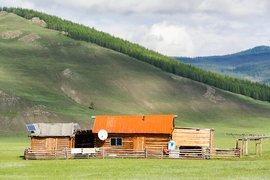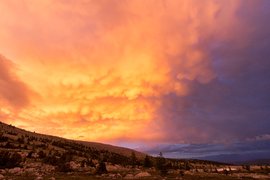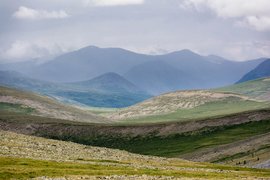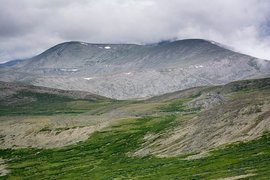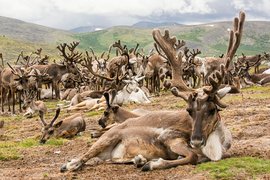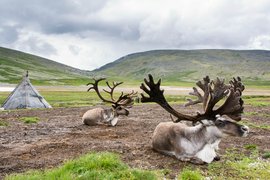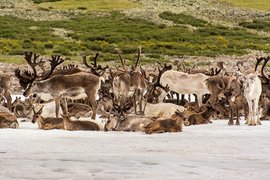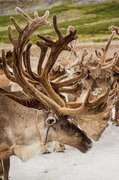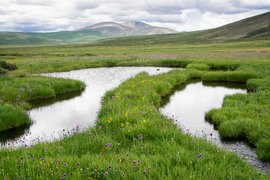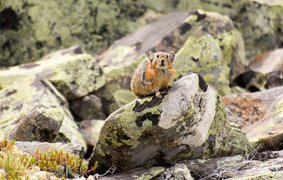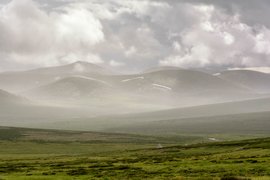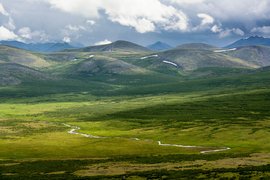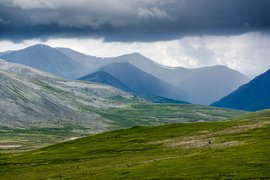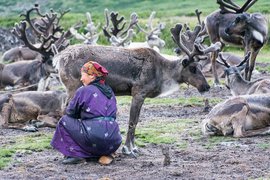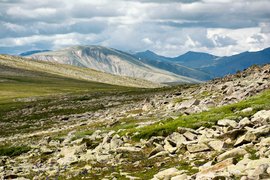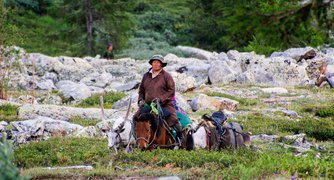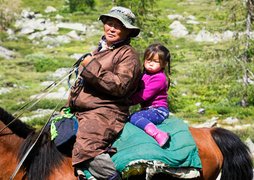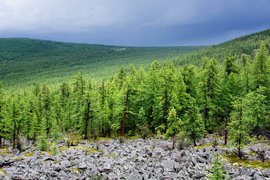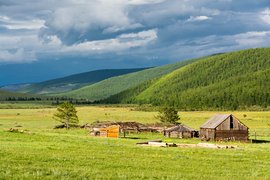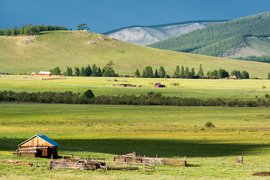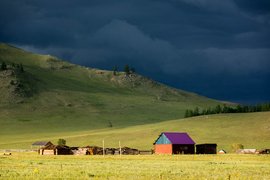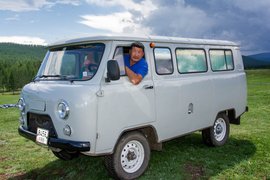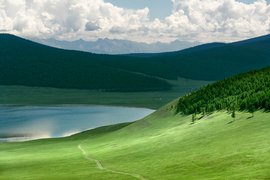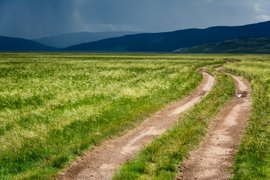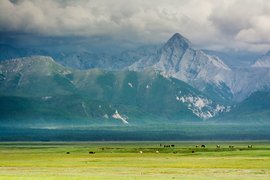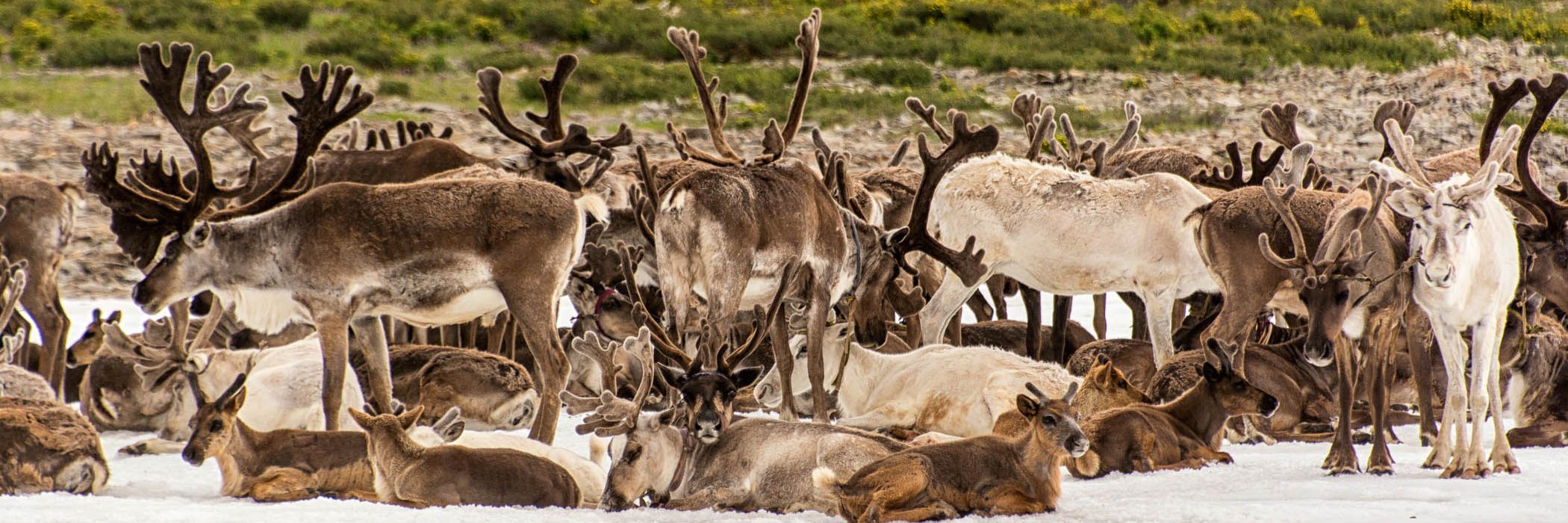Mongolia - Meeting the Reindeer People

The morning is quiet, low sun slowly warms the valley. There are only birds echoing out of the forest and the odd noise from the sheep close by. There's a small stream meandering below and a curtain of fir trees that look as if they flowed down the slope and stopped abruptly.
To the north are some high stony mountains, the first of which we're headed over on our way to the reindeer herding area, two days away by horseback. As payment for joking about Mongolian roads being like riding a bronco, I'm given a semi wild beast that likes to see if it can buck me off it's back at random intervals. He's not happy about me or the saddlebags being on his back. It's a battle of wills that will continue over the next four days.
We follow what's left of what was left of the road until it peters out at the edge of the forest. We've passed through wide open grassland fringed by forest with the occasional rustic log cabin. It's a scene that could be from four hundred years past in central Europe.
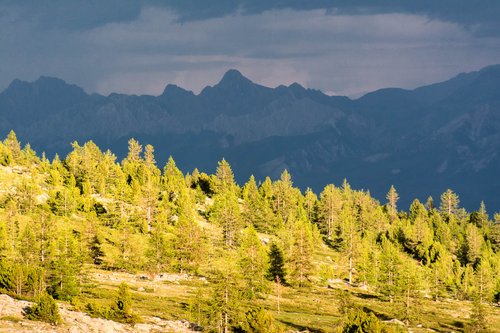
The only route to the Darkhan Depression, where the Tsaatan reindeer herders live, starts as a vague mud track through the forest on the other side of a small river tumbling down the mountain. We pick our way through increasing deep mud and rocks for the next few hours until emerging at an alpine pass and make camp the night. The view from the top reveals a vast panorama in seemingly endless deep forest with wild craggy peaks in the distance. There's weather to match with lightning arcing across the sky in the distance. Sun pierces through just before disappearing behind the mountain.
We've two more boggy passes to cross the next morning. On the way through we meet some Tsaatan people coming the other way, some on horseback, some riding reindeer. I had no idea you could ride a reindeer but they seemed well adapted to the terrain, seemingly doing better than the horses.
Beyond the second pass we descend an alpine valley. It's colder on the north side, devoid of trees, only alpine shrubs and grasses thrive here. It's the height of summer but a biting wind cuts through everything and I can see my breath. We meet our first reindeer herd as the valley begins to open out, there's around fifty, roped together in pairs, grazing out on the scrub.

Our host family live not too far down the valley for now, they've moved up for the summer now that most of the snow has disappeared. Their nomadic tents (orts) are similar to the North American teepee instead of the usual ubiquitous round gers found throughout the rest of the country. We're greeted with warm reindeer milk and reindeer cheese. Another use for reindeer I had no idea about. The cheese is superb, though it's been two months since I last tasted real cheese so I may be rating it generously.
The promise of experiencing the unique and ancient shamanistic culture of the Tsataan people turns out to be a bit of a fizzer. They're either sleeping or watching the solar powered satellite TV and not really interested in interacting with their guests. Plan B, take off for a very long hike through the superb scenery around.
First stop, the reindeer herd parked on the last remaining patch of snow in the valley. Turns out they're not very good at keeping cool, and even though the temperature is struggling to hit double digits with the wind chill, it's a bit much for them, so they stretch out on the ice to cope with things. They don't seem too fussed by my presence and let me wander right up close.
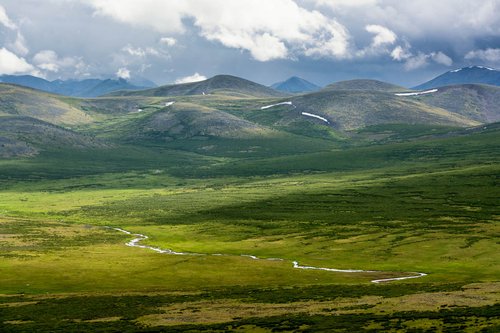
Climbing a nearby ridge I get my first view into the main valley - it's huge. A vast wide boggy valley, stony hills growing to craggy mountains in the distance, groups of ort tents scattered around. There are dark clouds and thunder showers swirling around the valley, deep yellow sunlight piercing through throwing swathes of bright green amongst the deep shadows. While I'm sitting up on the ridge taking this in, another herd of reindeer wanders past on their quest to find the best lichen in town while a Pallas's pika nervously gathers food for its winter store.
There's a tall ridge across the valley which makes an excellent loop back to camp. It takes a while to get across the bogs but once up on the slopes the going is easy. The tops are wide flat tables of smashed stones. The long icy winters sculpt the landscape here. There's an even greater view of the immense desolate landscape from here. To the north, the mountains that run into Russia disappear into the growing black clouds as lightning arcs across the sky. It fits with the landscape. I'd managed to cut a path in between the storms so far but I was beginning to see my luck run out. It's a long hike back across the shattered ridges to get back to camp, I catch the start of the storm as I get to the last descent.

We decide to try and make as much of the journey back in one day as we can rather than do another cold night on top. The weather's good in the morning, but thunderstorms seem to be the norm for the afternoons here. My horse tries to throw me from the start but I'm having none of it. We eventually reach understanding and make tracks back out of the valley and up over the high passes.
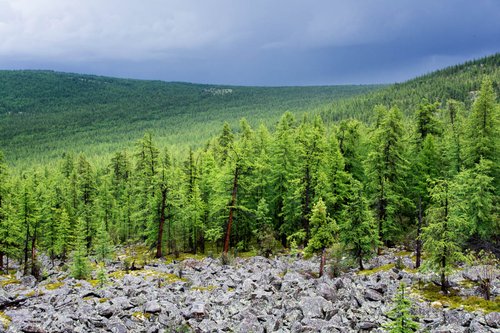
A late lunchbreak and already the pass behind is black with thunder rolling around. We've still the painful mud/rock section to get through and, as we start that, the sky disappears and thunder peels across the valley above us. Something like a waterfall opens up over us and everything is soaked in seconds. Even the fight has gone from my horse. The track becomes so treacherous that I decide to give him a break and lead him down, a truce seems to have established between us.
As the valley widens out and the forest opens up, the skies break and the sun surges through. Even the colours are saturated after the storm. There's a general consensus that, with around three hours of light left, we should make a break for the warmth and welcome of the horse guides' home.
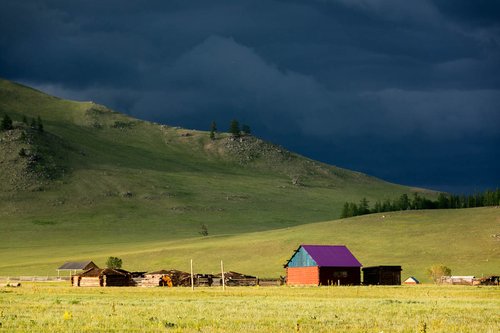
As luck has it, shortly after hitting the first driveable track, our guide meets some friends driving that direction. We offload the packs from the horses and set off at a canter. There are rapidly growing black and purple thunderheads in our path with some wild lighting marching towards us. The sun cuts some incredible contrasts beneath, but it's quickly obvious we've a race on to beat the next storm. The canter turns to a hour long full gallop into the growing wind. The rain hits just as we reach home, falling like some biblical deluge. Full marks to my steed for carrying me and panniers across three mountain passes and down a slithering mud track in the rain, then being up for a two hour canter/gallop at the end of it. I would have bucked at that too.
Once again, the horse guide's family are so hospitable and generous it's humbling. Blazing fire, fresh hot milk straight from the cow, cheese, homemade bread, bowls of steaming stew. From wet, cold and hungry to dry, cozy and fed - climbing into a soft bed, sleep wraps its arms around me and drags me down into a very contented deep slumber.
We spend the morning with the family, playing with the kids, herding animals and helping to make cheese. More food comes forth, and I'm feeling very happy in this peaceful beautiful valley with this great family. All good things come to an end, we bid a warm farewell. There's a 12 hour bone shaking drive back to town to get over and done with.

